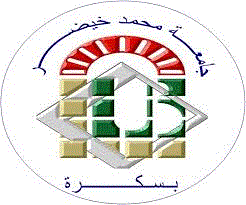|
Résumé :
|
L’animation comportementale cherche à offrir des modèles et des outils permettant la création d’entités virtuelles autonomes. Ces entités perçoivent leur environnement, agissent sur ce dernier et surtout prennent d’elles-mêmes des décisions en rapport avec la situation perçue dans le but d’exhiber un comportement cohérent proche de l’organisme vivant simulé. La simulation de la foule d’humains virtuels est un sujet très récent dans la recherche en infographie, et a pour but de générer facilement les mouvements, action est comportements d’un grand nombre d’individus. Parmi les applications de simulation de foule d’humains virtuels, le problème de panique. La simulation macroscopique a été historiquement la première approche utilisée pour simuler les déplacements de personnes, du fait de son faible coût de calcul. En effet, dans cette approche, le piéton n’est pas traité individuellement mais en tant qu’élément constitutif d’une matière plus macroscopique. Cependant, les méthodes microscopiques ne peuvent pas remplacer les méthodes macroscopiques, mais elles sont considérées comme une analyse plus détaillée pour la conception et l’interaction de piétons considérant que des caractéristiques individuelles et des facteurs psychologiques et sociologiques. Nous avons proposé un modèle de simulation microscopique d’une foule à haute densité d’humains vrtuels dans un environnement dynamique. Nous avons commencé par le la description d’un environnement de simulation, non seulement d’un point de vue topographique, mais aussi sémantique. Pour cela nous avons utilisé les deux approches de représentation de l’environnement à savoir, le graphe de grille et le graphe topologique. L’originalité de notre travail est l’introduction d’un ensemble des règles socio-psychologiques influençant le comportement de la foule. L’intégration de ces règles dans notre modèle et on combinant l’approche à base de règles et l’approche de force sociale ont conduit à des simulations réalistes. Abstract Behavioral animation seeks to offer models and tools allowing the creation of autonomous virtual entities. These entities perceive their environment, act on this last and especially take themselves of the decisions in connection with the situation perceived with an aim of exhiber a coherent behavior near to the simulated living organism. The purpose of the simulation of the crowd of human virtual is a very recent subject in research in computer graphics, and is easily to generate the movements, action is behaviors of a great number of individuals. Among the applications of simulation of the crowd of human virtual, is the problem of panic. Macroscopic simulation was historically the first approach used to simulate displacements of people, because of her low cost of calculation. Indeed, in this approach, the pedestrian is not treated individually but as a component of a more macroscopic matter. However, the microscopic methods cannot replace the macroscopic methods, but they are regarded as a more detailed analysis for the design and the interaction of pedestrians considering that individual characteristics and psychological and sociological factors. We proposed a microscopic model of simulation of a crowd with high density of human vrtuels in a dynamic environment. We started with the description of an environment of simulation, not only from point of view topographic, but also from the semantic aspect. For this, we used the two approaches of representation of the environment knowing, the graph of grid and the topological graph. The originality of our work is the introduction of a whole of the socio-psychological rules influencing the behavior of crowd. The integration of these rules in our model and combining the approach based rules and the approach of social force have conducted to the realistic simulations.
|



